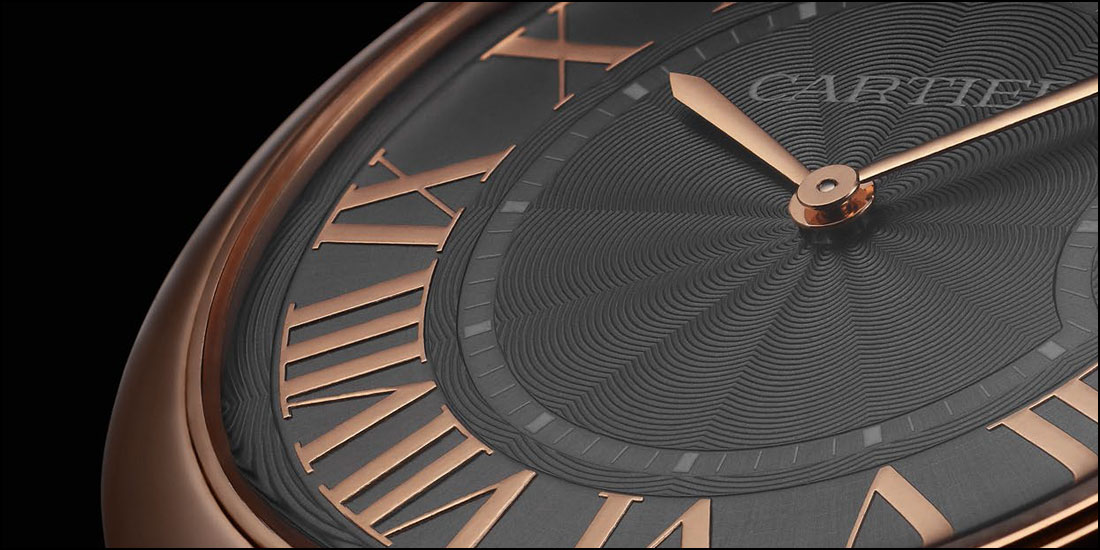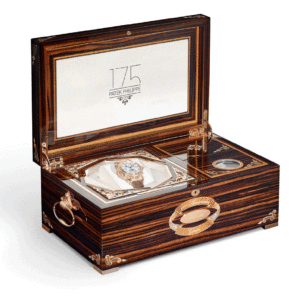
Touch. Sight. Hearing. Even smell. Our senses are active when it comes to watches, but are the latter indeed designed to pander to every sense ?
We are creatures of perception. Whether or not we are aware of it, we are constantly sensing our environment and the objects composing it. Watches are no exception – far from it. Composed of countless details, they are worn, held, observed and naturally appeal to our senses.
EYE
The most powerful is doubtless sight. It captures every detail at a glance, informs us best of all and stimulates us more than any another. A watch is first and foremost designed to be easy on the eye. Standing out on a page, on a screen, in a store window, it invites us to get more close-up and personal. It is then scrutinized on a velvet presentation tray or by zooming in on a screen. However, in the latter case, one is not looking at a watch, but rather at the image of a watch. Its colors, its dimensions and its volumes are not real, yet they nonetheless appeal to us.
SKIN
 Then comes the moment of picking up the watch, when touch comes into play, in the broadest sense of the term. While we look at a watch from time to time, we feel it constantly. Is it heavy ? Light ? Broader models fill up the entire palm. Is it soft, or are its edges sharp ? Is the texture of the strap or bracelet comfortable ? Once the watch is on the wrist, touch moves from fingertips to a less sensitive yet vulnerable zone. Does the watch sit gently on the skin ? Is it irritating, or is it to forget it’s even there ? The size of the case, the shape of the lugs and the nature of the materials are all crucial factors that make a decisive contribution to wearer comfort. That is how the intimate, enduring ties with a watch are woven.
Then comes the moment of picking up the watch, when touch comes into play, in the broadest sense of the term. While we look at a watch from time to time, we feel it constantly. Is it heavy ? Light ? Broader models fill up the entire palm. Is it soft, or are its edges sharp ? Is the texture of the strap or bracelet comfortable ? Once the watch is on the wrist, touch moves from fingertips to a less sensitive yet vulnerable zone. Does the watch sit gently on the skin ? Is it irritating, or is it to forget it’s even there ? The size of the case, the shape of the lugs and the nature of the materials are all crucial factors that make a decisive contribution to wearer comfort. That is how the intimate, enduring ties with a watch are woven.
NOSE
At the time of that first physical contact with the watch, one of the less frequently solicited senses comes into play : smell. It’s the most animalist, instinctive and memory-inducing of them all. Yet it’s a field totally neglected by watch brands. Leather straps often still carry a whiff of glue or solvents. Rubber has progressed a great deal, but some types still have a pungent smell. Presentation boxes tend to be the poor relatives of the watch industry and yet a leather casing or precious wood veneer glued onto a medium-sized hull results in a synthetic odor entirely incompatible with the luxury experience the watch is intended to convey. When leather straps become too damp, they exude a musty smell that never vanishes. Poor-quality metal bracelets can end up smelling of perspiration in summer. The same goes for fabric straps, but at least these are easily washable.
EARDRUMS
We now enter the small world of hearing, which is totally ignored. Watches make noise and this noise is a token of quality. We won’t go into minute repeater watches, a field where brands like to boast of impressive performance. The musicality of striking watches is a complex theme that deserves to be examined in its own right. The first auditory aspect we will touch on here concerns winding. Does the crown go crrrr ? Zzzz ? Or is it silent ? The lighter and subtler the sound, the better the design of the barrel and its spring, unlike the rattling noises of rudimentary movements. The second is its ‘tick-tock’ sound. The less perceptible its ticking, the weaker the impacts of the pallet-lever on the pallet-wheel, and the better the movement’s performance in terms of friction. The last detail of this kind concerns the rotor of automatic watches. They are fitted on ball bearings. Those made of ceramic make a really loud, cheap-sounding noise when the watch is moved, entirely unsuited to a certain level of watch and yet unfortunately very frequent.
AND FINALLY…
The only sense not evoked here is taste, and one must admit that watches are not made to be placed in the mouth. Yet taste is not merely the tongue’s ability to distinguish between sweet, salty, sour, bitter and umami. It’s a matter of education. An aesthetic sense enabling us to set aside anything vulgar or unsatisfactory. We all have it, but it’s not always good…

PAUL O’NEIL
Chief Editor of WorldTempus.com
David’s article is a great reminder that the beautiful images that you see in GMT magazine are just the point of entry into a fascinating world that captivates all our senses. Those who are genuinely passionate about watches are much more interested in testing the watch out on their wrist, checking out minute details such as lugs, lug widths and straps. After all, they will be wearing the watches on a regular basis. These watches also need to talk to their wearers, in both the literal and figurative senses. As David rightly points out, the sound of a watch can be an important consideration and can only be judged by seeing (and hearing) the watch in store. It’s an excellent way of emphasizing that, beyond the pages of GMT, and the recommended articles on worldtempus. com, a visit to your local watch store remains indispensable on your journey of discovery.






